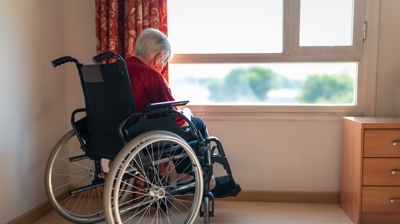Asbestos is a mineral that was once commonly used in construction. However, it has been found that asbestos fibers can cause serious health problems, including cancer, if they are inhaled.
Exposure to asbestos can occur in a number of ways, but the most common way is through inhalation of fibers released into the air when the asbestos is disturbed, such as during renovations or demolition.
Asbestos comes in several different forms, but the most common types are chrysotile, amosite and crocidolite. Chrysotile is the most common type of asbestos, and it accounts for about 95% of all asbestos used in the United States. Amosite and crocidolite are less common, but they are both more hazardous than chrysotile.
All forms of asbestos are dangerous when inhaled, but crocidolite is the most deadly. Crocidolite fibers are very thin and sharp, and they can easily pierce the lungs. Once inside the lungs, the fibers can cause scarring and inflammation, which can lead to cancer and other asbestos-related diseases.
How are people exposed to asbestos?
As we mentioned above, the most common means of asbestos exposure is through inhalation of fibers released into the air when the asbestos is disturbed. Asbestos fibers can also be ingested if they are brought home on clothes or skin.
Most people are exposed to asbestos at work. Many jobs involve contact with asbestos, such as construction, demolition, mining and shipbuilding.
Asbestos is not currently illegal in the US, but there are a number of regulations governing its use. The Occupational Safety and Health Administration (OSHA) has set limits on the amount of asbestos that can be present in the air, and companies are required to take steps to protect their employees from exposure.
How much exposure to asbestos can lead to cancer?
Exposure to asbestos can cause a number of different health problems, including cancer. How much exposure is needed to develop cancer is not entirely clear, but it is believed that there is no safe level of exposure.
The most common type of asbestos-related cancer is mesothelioma, a rare form of cancer that affects the lining of the lungs. Other types of asbestos-related cancer include lung cancer, ovarian cancer and pancreatic cancer.
Exposure to asbestos can cause a number of different health problems including:
- Cancer
- Lung disease (including pulmonary fibrosis or asbestosis)
- Asbestos related pleural effusion
- Mesothelioma
- Ovarian and Pancreatic cancers
- Skin conditions (such as dermatitis)
- Eye irritation
- Gastrointestinal problems
- Miscarriage and other reproductive problems
- Cardiovascular problems
What are the risk factors for asbestos related cancer?
There are a number of different risk factors for asbestos-related cancer, including:
- Length of exposure – The longer you are exposed to asbestos, the greater your risk of developing cancer.
- Amount of exposure – The more asbestos you are exposed to, the greater your risk of developing cancer.
- Type of asbestos – The type of asbestos is also a factor in determining your risk of developing cancer. Crocidolite is the most deadly form of asbestos, while chrysotile is less dangerous.
- How you are exposed – How you are exposed to asbestos also affects your risk of developing cancer. Inhaling asbestos fibers is the most dangerous way to be exposed, but you can also be exposed through ingestion or skin contact.
- Age – Your risk of developing asbestos-related cancer increases with age.
- Sex – Women are more likely to develop ovarian and pancreatic cancers after exposure to asbestos, while men are more likely to develop lung cancer and mesothelioma.
- Genetics – Some people may be more likely to develop cancer after exposure to asbestos due to their genes.
- Previous cancer – If you have had cancer before, you are at a higher risk of developing asbestos-related cancer.
- HIV/AIDS – People with HIV/AIDS are at a higher risk of developing all types of cancer after exposure to asbestos.
What are the legal rights of those who have been exposed to asbestos?
If you have been exposed to asbestos and develop cancer as a result, you may be eligible for compensation. There are a number of different legal options available, including workers’ compensation, personal injury lawsuits and class action lawsuits. You may be able to file a lawsuit against the company or person responsible for your exposure.
There are a number of different laws that can help protect those who have been exposed to asbestos, including:
- The Asbestos Hazard Emergency Response Act (AHERA) – This law requires schools and other public buildings to test for and remove asbestos from their facilities.
- The Toxic Substances Control Act (TSCA) – This law allows the EPA to regulate the use of asbestos and other harmful chemicals.
If you are feeling negative health effects as a result of exposure to asbestos, your first call should be to a doctor. A medical professional can help diagnose your condition and provide you with a plan to get healthy.
Next, an attorney can help you determine which legal option is best for you and help you file a claim to recover compensation.
If you or a loved one has been exposed to asbestos and developed cancer, contact the attorneys at Niemeyer, Grebel and Kruse today for a free consultation – (314) 350-1900.






